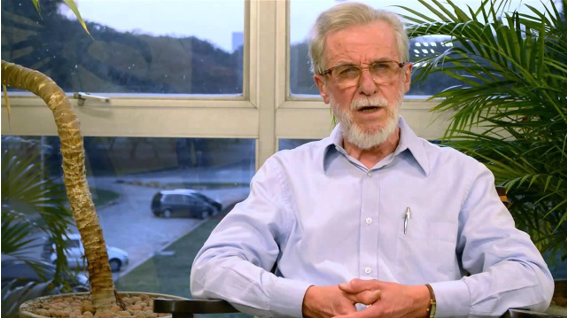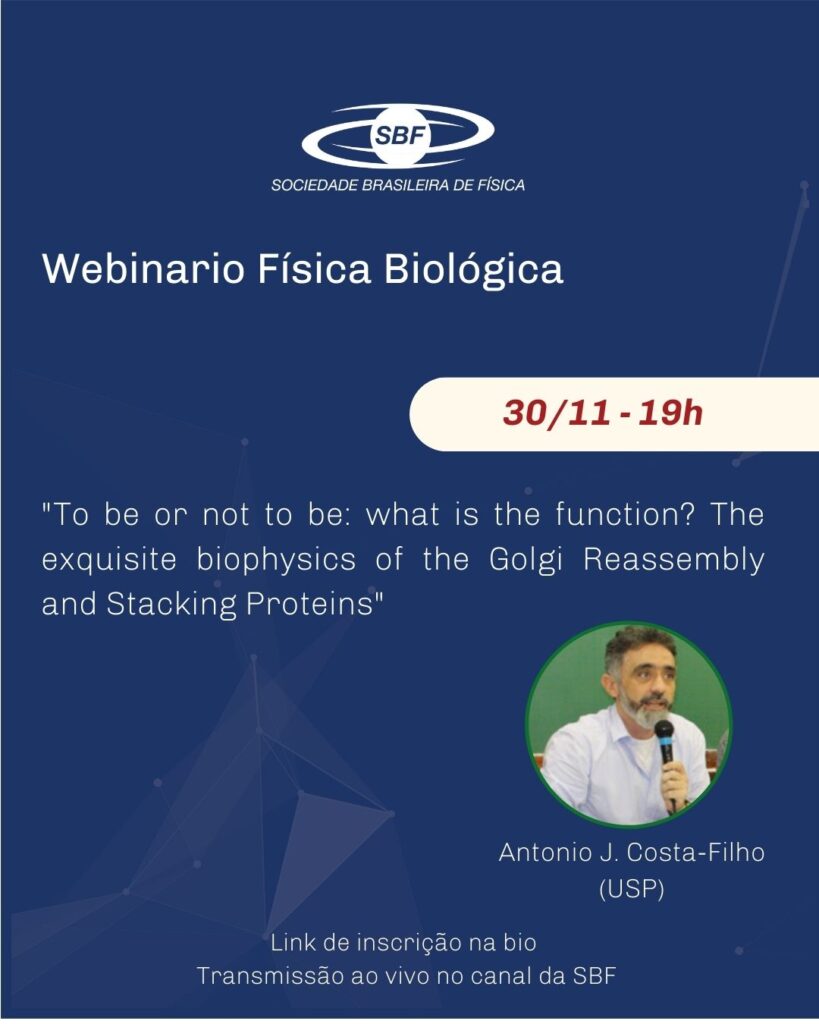To be or not to be: what is the function? The exquisite biophysics of the Golgi Reassembly and Stacking Proteins
Antonio J. Costa-Filho
Departamento de Física, Faculdade de Filosofia, Ciências e Letras de Ribeirão Preto,
Universidade de São Paulo
Golgi Reassembly and Stacking Proteins (GRASPs) are involved in cell processes that seem
paradoxical: they are responsible for shaping the Golgi structure and participate in
unconventional secretion pathways that bypass the Golgi. The exact molecular mechanisms
underlying each process remain elusive. Their structures are constituted by the C-terminal SPR
domain and the N-terminal GRASP domain, formed by two PDZ subdomains. Structural data
have been limited to the GRASP domain. This talk will show results obtained with full-length
GRASPs, which unravel unexpected structural features: the presence of intrinsically disordered
regions (IDRs) and their capacity to form fibril-like structures and undergo liquid-liquid phase
separation (LLPS). IDRs exist even in the GRASP domain, and their distribution is not
homogeneous. Our data establish a firm basis for understanding why PDZ1 behaves differently
to PDZ2 in solution, despite their similar 3D structures. Such difference offers a robust
molecular rationale for the long-recognized asymmetry of the PDZs regarding the number and
diversity of interacting partners. A comparison of our in vitro biophysical data of GRASPs from
fungus, yeast, and humans shows that only one of the human GRASPs (GRASP65) is similar to
the lower eukaryotes. We also show that GRASPs can transition to different higher-order
oligomers, such as amyloid-like fibrils, and undergo LLPS under conditions that mimic those
found during cellular stress. We propose a model of how the cell could use the GRASP
sensitivity to changes in its local environment to trigger those transitions, thus impacting its
role during different cell-cycle periods.
A atividade acontecerá no Youtube: https://youtu.be/tzBEPFoSHZM






